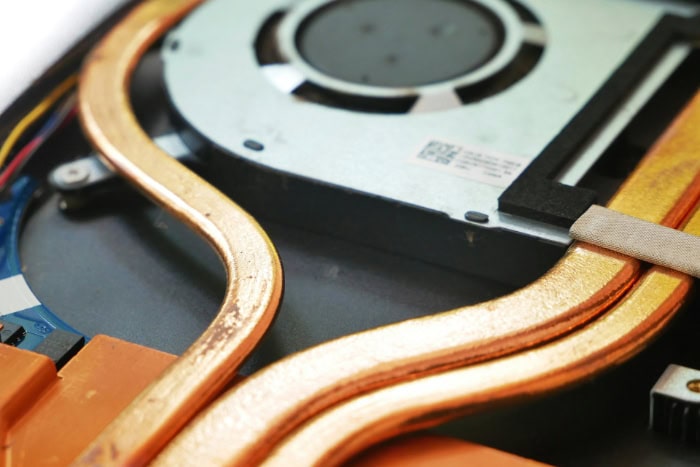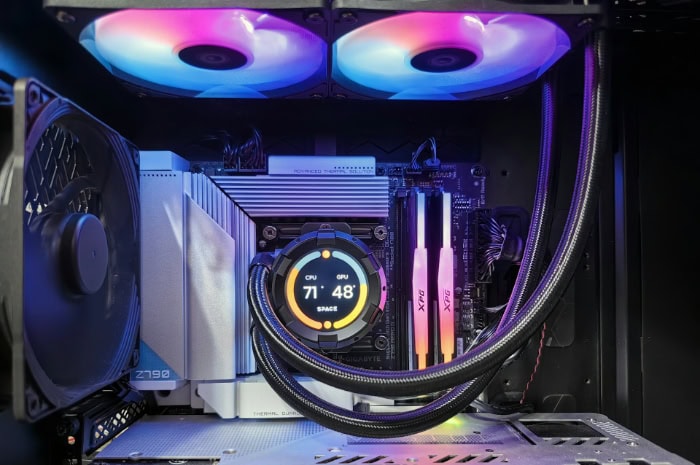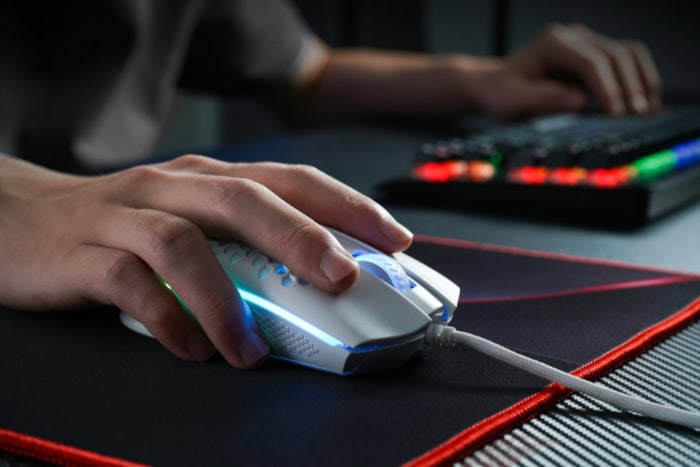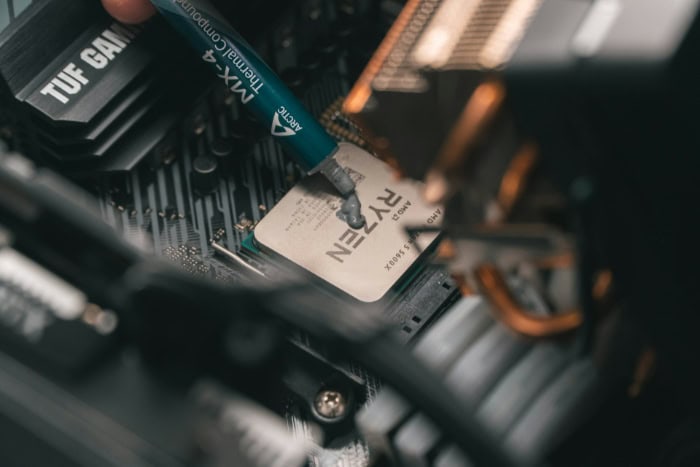What Is Thermal Throttling? Causes and Prevention Tips

Your game runs perfectly for the first thirty minutes, but suddenly the framerate tanks and your fans start screaming. The movement on screen turns into a stuttering mess right when you need precision the most.
This frustrating phenomenon is usually caused by thermal throttling. It acts as an emergency brake for your computer.
When components get too hot, the system deliberately restricts power to the processor to prevent physical damage or failure.
While this keeps the silicon safe, it destroys the speed and responsiveness you expect from your machine. Ignoring the issue often leads to consistent performance drops and prevents you from getting what you paid for.
The Mechanics Of Throttling: Why Hardware Slows Down
Modern computing components are engineering marvels designed to process billions of instructions per second, but this massive computational effort generates a significant by-product: heat. Every electron moving through a processor creates resistance, and that resistance manifests as thermal energy.
The system must dissipate this heat efficiently to keep the hardware running. When the cooling solution reaches its physical limit and cannot displace the heat faster than it is generated, the hardware initiates a self-protective protocol known as thermal throttling.
This is not a glitch or a bug; it is a fundamental design feature intended to save the machine from self-destruction.
The Safety Trigger And Tjunction
Every processor has a predefined thermal limit known as Tjunction. This value represents the maximum temperature the silicon die can tolerate before immediate damage occurs.
Intel, AMD, and NVIDIA engineer their chips with a dense network of digital thermal sensors located at the hottest spots on the die. These sensors constantly report temperature data to the system's management controller.
For most consumer CPUs, the Tjunction is usually set between 95°C and 105°C. The moment the sensors detect that the core temperature has hit this ceiling, the hardware sends an emergency signal (often called PROCHOT) to the rest of the system.
This signal acts as an immediate command to reduce thermal output before the temperature climbs any higher.
Clock Speed And Voltage Reduction
Once the safety trigger is activated, the processor must reduce its thermal output instantly. It achieves this by lowering its clock speed and voltage.
The clock speed, measured in gigahertz (GHz), dictates how many cycles the CPU can execute per second. Higher speeds require more power and generate more heat.
Upon receiving the throttling signal, the CPU aggressively downclocks, dropping from its boost frequency (e.g., 5.0 GHz) to its base clock or even lower (e.g., 800 MHz). Simultaneously, the voltage supplied to the chip is reduced.
Since power consumption scales with the square of the voltage, even a small reduction here results in a massive drop in heat generation. This rapid shift allows the temperature to stabilize or decrease below the critical Tjunction limit.
Hardware Preservation Versus Performance
The immediate consequence of this process is a severe reduction in system performance, which the user experiences as lag or sluggishness. While this is frustrating, it is a necessary trade-off.
Without throttling, the silicon would continue to heat up until it suffered permanent physical degradation. Excessive heat can cause electromigration, where the flow of electrons physically moves atoms out of place within the chip, eventually causing circuits to fail.
In extreme cases, unchecked heat could melt the solder connecting the chip to the board or warp the physical structure of the processor. Throttling ensures the device survives to function another day, prioritizing hardware longevity over momentary processing speed.
Recognizing The Symptoms: How Throttling Affects Usage

Identifying thermal throttling often requires observing how the computer behaves during sustained workloads. The symptoms are rarely subtle when the system is under heavy load.
A computer that feels snappy and responsive when first turned on but gradually becomes sluggish after ten or twenty minutes of use is a prime candidate for thermal issues. The performance loss is directly tied to heat saturation, meaning the symptoms appear only after the components have had time to warm up and overwhelm the cooling system.
Gaming Scenarios And Frame Rate Drops
For gamers, throttling manifests in a very specific and annoying pattern often described as cyclic stuttering. You might start a game with high, smooth frame rates because the system is cool.
As the GPU and CPU work hard, heat builds up. Once the temperature limit is hit, the hardware throttles, and the frame rate plummets suddenly; for example, dropping from 144 FPS to 20 FPS in an instant.
This creates a stuttering effect where the game becomes unplayable for a few seconds. During this slowdown, the chip cools down slightly because it is working less.
Once it drops below the danger zone, it boosts its speed again, and the frame rate recovers. This cycle repeats constantly, resulting in an inconsistent and frustrating gaming experience.
Impact On Productivity And Content Creation
Professionals using demanding software face different but equally disruptive issues. In video editing or 3D rendering, the processor is often pegged at 100% usage for extended periods.
If the cooling is inadequate, the CPU will not be able to maintain its advertised boost speeds. A render that should take thirty minutes might stretch into an hour because the processor is constantly braking to stay cool.
The user interface in applications like Adobe Premiere or Blender might become unresponsive or jerky. The timeline may lag when scrubbing through footage, disrupting the creative workflow and reducing overall efficiency.
Audible And Tactile Warning Signs
Beyond screen performance, the physical state of the machine provides clear clues. The most obvious sign is fan noise.
When temperatures rise, the system fans will spin at their maximum revolutions per minute (RPM) in a desperate attempt to push hot air out. If the fans are screaming but the computer is still slow, it usually means the airflow is not enough to cool the components.
Additionally, the chassis itself can become alarming to touch. On laptops, the keyboard deck or the area above the function keys may become uncomfortably hot.
On desktops, the exhaust air blowing out the back might feel exceptionally hot, or the side panel near the GPU may radiate significant heat.
Diagnosis: How To Confirm Throttling Is Happening

While symptoms like stuttering and fan noise are strong indicators, they are not definitive proof. Other software issues or driver conflicts can mimic these problems.
To confirm thermal throttling is the culprit, you need to look at the data your computer is generating. This involves monitoring the relationship between temperature and performance in real-time.
Utilizing Monitoring Software
To diagnose the issue, you need access to the sensors built into your hardware. Tools such as HWMonitor, MSI Afterburner, or Intel Extreme Tuning Utility (XTU) are standard for this task.
These programs read the data from the thermal sensors and report it in an easy-to-read format. MSI Afterburner is particularly useful for gamers as it features an On-Screen Display (OSD) that overlays temperature and clock speed data on top of your game while you play.
This allows you to see exactly what is happening the moment a lag spike occurs. For a more detailed desktop view, HWMonitor provides minimum, maximum, and current values for every sensor in the system.
Interpreting Temperature And Clock Speed Data
When analyzing the data, you are looking for a specific correlation. Open your monitoring tool and perform an intensive task.
Watch the temperature gauge for the CPU or GPU. If the temperature climbs steadily and then hits a “wall” (usually around 90°C to 100°C for CPUs, or 83°C to 88°C for GPUs) and stays there, you have found the thermal limit.
The critical confirmation comes from watching the clock speed (MHz or GHz) at that exact moment. If the clock speed graph “flatlines” or takes a sharp dive the instant the temperature hits that ceiling, throttling is confirmed. You are seeing the hardware deliberately slowing down to prevent the temperature from crossing that maximum line.
Stress Testing The System
Sometimes normal usage is too variable to get a clear reading. In these cases, stress testing benchmarks can force the system to reveal its limits.
Programs like Cinebench for CPUs or Heaven Benchmark for GPUs apply a constant, maximum load to the components. This eliminates variables like game optimization or background tasks.
By running a stress test for ten minutes, you can verify if the cooling system is capable of handling the hardware's maximum output. If the scores are significantly lower than average for your specific parts, or if the clock speeds drop drastically halfway through the test, the cooling solution is insufficient.
The Root Causes: Why Devices Overheat

Understanding why a computer hits its thermal limit is the first step toward solving the problem. While every processor generates heat, a healthy system dissipates it faster than it is created.
When thermal throttling occurs, it indicates a failure in this removal process. The heat is trapped somewhere in the chain between the silicon chip and the air outside the case.
This blockage can stem from physical debris, aging chemical components, or simply a cooling design that is not robust enough to handle the power of the hardware it is meant to cool.
Airflow Obstructions
The most common adversary of efficient cooling is dust. Over months and years, computers act like air purifiers, sucking in dust, pet hair, and particulate matter from the room.
This debris accumulates on the intake filters, fan blades, and most critically, inside the metal fins of the heatsink. When these fins get clogged, the air cannot pass through them to absorb the heat.
The fan might be spinning at full speed, but if it is pushing air against a wall of grey fuzz, the heat remains trapped in the metal. This creates an insulating layer that essentially wraps the components in a blanket, causing temperatures to spike rapidly even under light loads.
Degraded Thermal Interface Material
Between the metal top of your processor and the copper plate of the cooler sits a microscopic layer of thermal paste. This substance is vital because it fills the microscopic imperfections on both metal surfaces, ensuring efficient heat transfer.
However, thermal paste does not last forever. Over time, the constant cycle of heating up and cooling down causes the paste to dry out, crack, or pump out to the sides.
When the paste degrades, air pockets form between the chip and the cooler. Since air is a terrible conductor of heat, these gaps prevent the cooler from doing its job.
The cooler might feel cool to the touch, but the chip underneath is burning up because the bridge between them is broken.
Inadequate Cooling Solutions
Sometimes the issue is not age or maintenance, but the design of the computer itself. This is particularly prevalent in ultra-thin laptops and pre-built gaming desktops.
Manufacturers often prioritize sleek aesthetics or cost savings over thermal performance. They might pair a high-end, power-hungry i7 or i9 processor with a slim cooling system that physically lacks the surface area to dissipate 200 watts of heat.
In these scenarios, the hardware is destined to throttle from day one because the cooling solution is mathematically incapable of handling the energy output of the CPU or GPU under full load. The cooler becomes saturated with heat almost instantly, forcing the system to slow down to match the cooler's limited capacity.
Ambient Environment
The environment outside the computer case plays a significant role in internal temperatures. A cooling system works by moving heat from a hot source to a cooler environment.
If the room temperature is high, such as during a summer heatwave without air conditioning, the “delta” or difference between the component temp and the air temp shrinks, making cooling less efficient. Furthermore, placement matters.
Placing a gaming PC on a thick carpet can choke the power supply intake on the bottom. Similarly, using a laptop on a bed or sofa allows the fabric to conform to the base of the device, completely blocking the intake vents and rendering the fans useless.
Mitigation And Prevention Strategies

Once you have identified that your system is suffering from thermal throttling, you can take specific actions to reverse it. The goal is to improve the efficiency of heat transfer and maximize airflow.
Most solutions are cost-effective and involve simple maintenance or software tuning, though some severe cases may require replacing hardware parts.
Physical Maintenance
The most immediate fix for an older machine is a thorough cleaning. You should power down the device and open the case to access the fans and heatsinks using a can of compressed air to blast away the dust buildup.
It is important to hold the fan blades in place so they do not spin wildly while you spray them, as this can damage the bearings or send back-voltage into the motherboard. Focus on clearing the dust filters and the metal fins of the heatsink.
For laptops, blowing air into the exhaust vents can sometimes dislodge clumps of dust blocking the airflow, though opening the back panel for a direct clean is always more effective.
Optimizing Fan Profiles
Factory fan settings are often tuned for silence rather than maximum performance. Manufacturers assume users prefer a quiet machine over one that runs five degrees cooler.
You can override this by adjusting the fan curve in the BIOS or using software like Fan Control or MSI Afterburner. A standard curve might not ramp the fans up to 100% until the CPU hits 90°C.
By creating a more aggressive curve, you can command the fans to hit 100% speed at 70°C or 75°C. This preemptive increase in airflow helps delay heat soak and keeps the system further away from the throttling threshold during gaming or heavy work.
Undervolting
One of the most effective ways to stop throttling without opening your computer is undervolting. This process involves slightly reducing the voltage supplied to the CPU or GPU.
Chips are often shipped with more voltage than they strictly need to ensure stability across all batches. By using tools like Throttlestop or Intel XTU, you can lower this voltage by small increments (e.g., -50mV or -100mV).
Lower voltage means less power consumption and significantly less heat generation. Because the clock speed remains the same, you do not lose performance.
In fact, you often gain performance because the cooler temperatures allow the processor to maintain its boost frequencies for longer periods without hitting the thermal limit.
Hardware Upgrades
If cleaning and tuning are not enough, the hardware itself may need an upgrade. Replacing the old, dried-out thermal paste with a high-performance compound like Arctic MX-6 or Thermal Grizzly Kryonaut can drop load temperatures by several degrees.
For desktop users, swapping the stock cooler for a robust aftermarket air tower or an All-In-One (AIO) liquid cooler provides a massive boost in thermal headroom. Laptop users have fewer internal options, but a high-quality laptop cooling pad with active fans can force fresh air into the intakes, dropping internal temperatures enough to prevent severe throttling during extended sessions.
Conclusion
Thermal throttling acts as a necessary guardrail for your technology. It is a protective reflex that kicks in when the system is pushed beyond its physical limits, signaling that the cooling solution can no longer cope with the heat being generated.
While it is frustrating to see frame rates drop or applications stutter, this mechanism effectively prevents permanent hardware damage. It prioritizes the survival of your processor over the immediate task at hand. However, relying on throttling to save your system is not a sustainable strategy for daily use.
To truly unlock the potential of your device, you must ensure it operates within a safe temperature range. A cool system is a fast system.
The raw power of modern silicon is useless if it cannot be sustained for more than a few minutes. Therefore, the responsibility falls on the user to maintain the environment inside the case.
Regular cleaning, monitoring temperatures, and ensuring proper airflow are not optional tasks; they are the primary requirements for consistent, high-end performance. By taking care of the thermal health of your machine, you ensure that it runs fast, stays quiet, and lasts for years to come.


